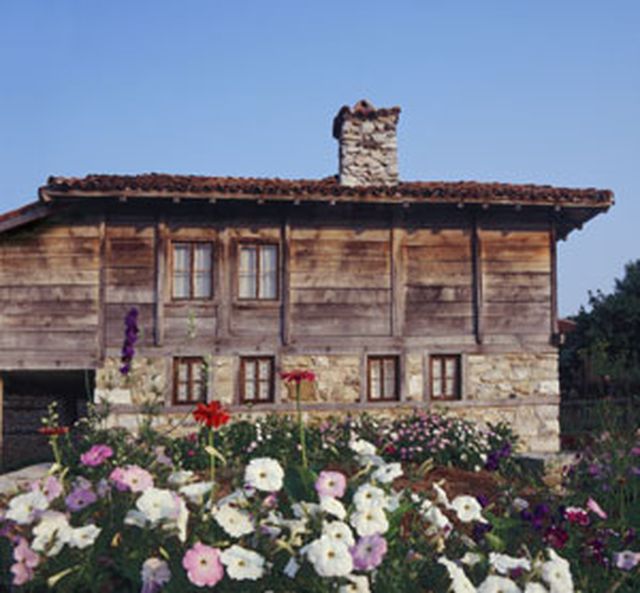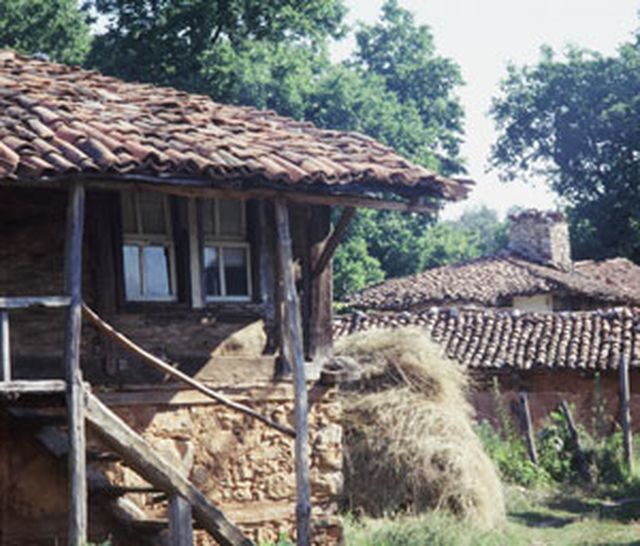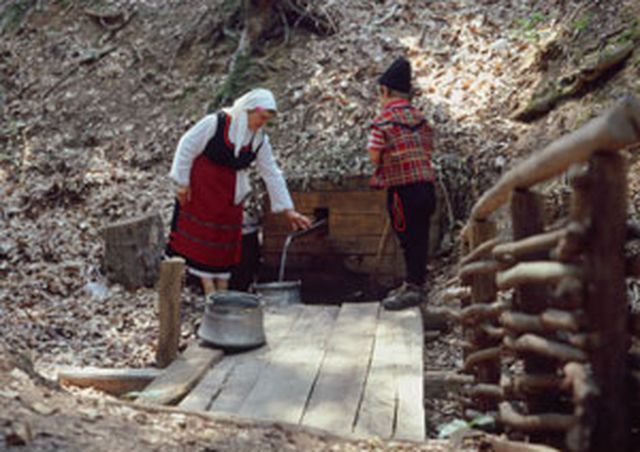THE MOUNTAIN OF THE ANCIENT THRACIANS
 “Malko Tarnovo” Municipality is in the heart of Strandzha Mountain and is wholly located on the area of the homonymous nature park. Less than five thousand people live in the whole municipality – it is one of the most sparsely populated regions in the country. It borders on Sredets, Sozopol, Primorsko and Tsarevo Municipalities, and Turkey is on the south. There is an international road passing through the Municipality. It is the shortest road that connects the European countries with the Near East. The town does not have any older name, although it exists from the IV-III century B.C. A sudden change in cultural and economic aspect has been made with the moving of the Empire from Rome to Constantinople by Emperor Constantine. Thus, Strandzha has turned out to be in immediate proximity of the new business, economic and cultural center. The mountain has provided for the entire supply of metal for the needs of the new capital, since it had become the nearest and biggest ore extraction center. Seventy ancient mines have been discovered on the territory of “Malko Tarnovo” Municipality. A series of monuments has been discovered in the town’s region – megaliths, hill necropolis, antique buildings, and a fortress, which reveal the significance of the town during the Thracian and Roman age.
“Malko Tarnovo” Municipality is in the heart of Strandzha Mountain and is wholly located on the area of the homonymous nature park. Less than five thousand people live in the whole municipality – it is one of the most sparsely populated regions in the country. It borders on Sredets, Sozopol, Primorsko and Tsarevo Municipalities, and Turkey is on the south. There is an international road passing through the Municipality. It is the shortest road that connects the European countries with the Near East. The town does not have any older name, although it exists from the IV-III century B.C. A sudden change in cultural and economic aspect has been made with the moving of the Empire from Rome to Constantinople by Emperor Constantine. Thus, Strandzha has turned out to be in immediate proximity of the new business, economic and cultural center. The mountain has provided for the entire supply of metal for the needs of the new capital, since it had become the nearest and biggest ore extraction center. Seventy ancient mines have been discovered on the territory of “Malko Tarnovo” Municipality. A series of monuments has been discovered in the town’s region – megaliths, hill necropolis, antique buildings, and a fortress, which reveal the significance of the town during the Thracian and Roman age.
The project “Strandzha direction – the mountain of the ancient Thracians” is financed by a program of PHARE, namely: “Development of the Bulgarian cultural tourism”. The budget amounts to Euro 232 350, and is managed in partnership between “Malko Tarnovo” Municipality and the Foundation for Development of Malko Tarnovo. The newly created tourism product combines the uniqueness and authenticity of the cultural heritage of Strandzha and comprises cultic architecture, original traditions, archeology, folklore, original and preserved crafts.
The state of the historical monuments has been improved, tourist infrastructure has been constructed, and permanent working places have been open. For three months, sixty native hotel-and-restaurant keepers are being trained in making successful tourism business.
A former shooting box in the “Pryaslopa” location, on 2 kilometers’ distance from Malko Tarnovo, is being turned into a modern tourist information center. It serves the tourists who show interest in the archeological sites of the Municipality.
The Thracian Tomb in “Mishkova Niva”
It has been discovered in 1981-1983 in “Mishkova Niva” location, on two kilometers’ distance from the tourist center. The sanctuary is part of a big complex that comprises a fortress on the “Golyamo Gradishte” peak, mines in its foot, a hill necropolis, reinforced buildings and urbanization remains.
The tomb has been used as a heroon – a sanctuary of a mythical or real tsar, a priest or a hero – or as a mausoleum of an eminent Thracian tsar.
A Roman villa rustika (a village house) and a necropolis are situated in immediate proximity of the tomb. On the highest point of the Bulgarian Strandzha, “Golyamo Gradishte” peak, there are the remains of one of the greatest Thracian fortresses in antiquity, and there has been a sanctuary of Apollo in the centre of it.
“Propada” Beehive tomb
The magnificent model of the Thracian cultic architecture is located on four kilometres distance on the northwest of Malko Tarnovo – a hill, comprising more that forty mounds. It has been discovered in 1979. The mounds in that location, which have been explored, very well reveal formed graves of the “cistae” type, known from 1st century B.C. The walls are covered with tile stones, which have been used for covering of the equipment as well. Two “cistae” graves of the necropolis have been explored in 2001. One of them reveals an archaeological sensation – it has been carefully constructed of well-processed marble tiles.
One of the newly discovered tombs has no parallel in Thrace, since natural rock has been used for its construction, and that rock has been processed at that very place.
“Kamaka” Thracian sanctuary
It is situated on six kilometers northeast of Malko Tarnovo. It is a complex of conglomerate rocks that are rare for Strandzha, and in antiquity, it has been used as a sanctuary by the Thracians. The so-called “solar circles” have been carved on the very rock, on a very high and light place. They are associated with the solar cult and Apollo God.
Explorations show that in 2500 B.C., there, the rise of the Sun God has been watched, and rites of great importance to the orpheic religious-philosophical system of the ancient Thracians have been held.
Stoilovo Village
A shelter has been built after the project, in the Dokuzak location near Stoilovo. There is a swift-flowing river there, with waterfalls and brooklets for washing of cloths, as well as the only field of Crimean tea in Bulgaria. In that village, after donkey ride, a “license for riding of Stoilovo donkey” is issued. The tourists can weave baskets and take part in the threshing.
There have been lots of wooden houses in Stoilovo, but just few of them have been preserved. Two of them reveal the typical decision for a prism plank house.
“Sveti Ilia” church has also been proclaimed architectural monument. There are the oldest gates of an altar.
Brashlyan Village
Brashlyan Village is located on 15 kilometers distance from Malko Tarnovo and on 64 kilometers distance from Burgas. It has been proclaimed an architectural preserve in 1982. Seventy-six of the houses there are cultural monuments and are typical representatives of the Strandzha architecture of XVIII and XIX centuries.
Here the Thracians have left traces as well. There are dolmens, hill necropolis, and remains of an antique settlement in the surroundings of the town. It is considered that the sanctuary of Dionis – the God of fertility and wine, and that of Zeus the Thunderer have been situated in Brashlyan. The site, on which “Sv. Dimitar” church has been built in the end of XVII century, has been a Thracian sanctuary in antiquity.
In connection with the project, workshops are organized in the village, with demonstrations of clothes manufacturing – carding, combing, spinning. The “Filetsi” custom is presented, as well as tasting of traditional Strandzha dishes. The tourist infrastructure constructed on the cultural route also comprises improvement of the access to the dolmens in the “Lagat” location, a shelter near the thousand-year old oak Blagun, restoration of “Sveta Troitsa” (Saint Trinity) monastery. During his visit in Bulgaria, Pope John Paul II crowns the icon of the Chenstohovska Holy Mother of God, in the same church.
The Architecture of Strandzha
The wooden houses of Strandzha are differentiated in one of the biggest territorial groups in Bulgaria and are systematized in three typical groups:
- West Strandzha wooden house – with corner fireplace (Gorno and Dolno Yabalkovo, Zhelyazkovo, Tagarevo, Bogdanovo, Fakia.
- Middle Strandzha wooden house – with fireplace on the wall (Stoilovo, Brashlyan, Vizitsa, Byala Voda, Zvezdets Gramatikovo, Kondolovo, Malko Tarnovo)
- East Strandzha wooden house – with a combined plan (Kosti, Brodilovo, Ahtopol).
The oldest residential building in Strandzha is the ground house, constructed with plank oak walls on stone foundations. It dates back to the beginning of XVII century, until the end of XVIII century. The house comprises one room, which is entered through a low door. The fireplace is put on the wall near the door or in the outside corner. It has a wide chimney that goes out above the roof. Little triangular or rectangular openings have been made for the lighting of the house’s room. The pets have given additional warmth to the room. They have lived on the ground floor under the room, and in cases the house has had no ground floor, they have lived in the very room. The West Strandzha and Middle Strandzha houses are wooden, with stone foundations or stone ground floors, and wooden storeys. The walls, floors and ceiling trimmer joists, and the roofs are made of oak material. Basic structural element of these houses is the big dark room (barn).
The two-storey Strandzha house with prolonged design could be seen in its early form, because of the slope of the terrain. The storey could be entered from the very terrain, or through an open wooden ladder. The ground floor is made of stone, and the storey is with plank walls. In the old grounded houses, the floors between the two storeys have not been made firm, so that the warmth of the cattle-pen could penetrate the room. Later, it is isolated through plastering of the walls and the floors, through putting of anterooms and circular corridors; the chimneys had special lids, so that they could be closed in cases of bad weather.
read more articles
